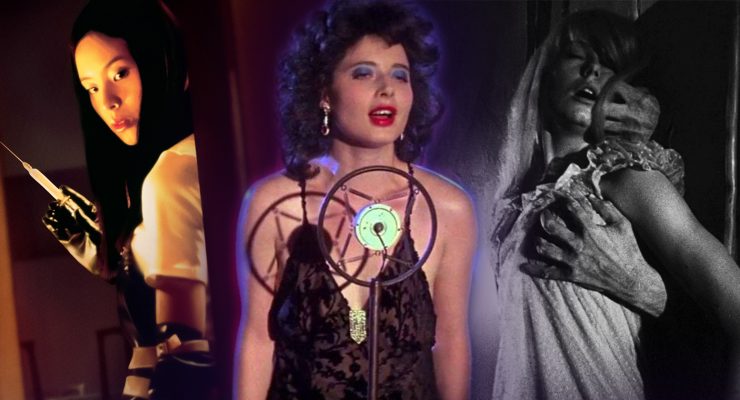Prey for the Devil, 2022.
Directed by Daniel Stamm.
Starring Jacqueline Byers, Colin Salmon, Christian Navarro, Lisa Palfrey, Nicholas Ralph, Ben Cross, Virginia Madsen, Tom Forbes, Velizar Binev, Owen Davis, Debora Zhecheva, Cora Kirk, Posy Taylor, and Elizabeth Gibson.
SYNOPSIS:
A nun prepares to perform an exorcism and comes face to face with a demonic force with mysterious ties to her past.
Filled with lazy jump scares and embarrassingly transparent plot twists and metaphors, Prey for the Devil is not a good movie. However, those aspects aren’t what bothered me; I somewhat expected director Daniel Stamm’s (from a screenplay by Robert Zappia, working on the story with Todd R. Jones and Earl Richey Jones) to go that route, but one character has a line lecturing that “exorcisms are about nuance” in a story as blunt as a hammer blow to the skull, which left me actively irritated for the remaining 45 minutes. The devil himself is probably laughing his ass off at the contradictory hypocrisy on display here.
Taking place at a Boston-based exorcism school, Sister Ann (Jacqueline Byers) has a tragic past involving her mother’s possession and subsequent death (which plays out in flashbacks drained of color to the extent of treating viewers like idiots, making sure they are aware the scene is from the past) that has fueled a close connection and rivalry with the devil. He wants to take over Ann and will stop at nothing. In general, demonic forces are rising in numbers with an unintentionally hilarious amount of ongoing cases that are so overblown in side effects and hellish behavior that everything comes across as cartoonish (the atrocious CGI doesn’t help matters).
Surprising no one, the Catholic Church is stuck in the past. Women cannot conduct exorcisms. It’s a status quo that Ann intends correct, especially upon developing a powerful link with the possessed young girl Natalie (Posy Taylor). With demons growing in numbers, Fr. Quinn (Colin Salmon) shows a progressive mindset and allows Ann to sit in on his courses detailing exorcism history and proper tactics. Amusingly, he doesn’t even seem like a good teacher, getting his ass handed to him during a hands-on lesson with one of the possessed individuals locked up for safety and treatment, but that’s beside the point.
Dismantling the patriarchy within this infrastructure is the one decent idea Prey for the Devil has, which is wasted on generic characters and bland plotting. The film also tries to get to the root of how people allow themselves to enter a weak enough state of vulnerability to be possessed, typically from grief and shame. While theoretically interesting, all this means is that Prey for the Devil is the most in-your-face and on-the-nose metaphor yet for facing trauma.
The connection between Ann and Natalie is believable enough, and the production design emphasizing religious imagery is occasionally well-constructed, but beyond that, there’s almost nothing to recommend. Even the seemingly forward-thinking intentions reverse backward as one contemplates the predictable twist and what Prey for the Devil is saying and shaming Ann for.
There’s just about every exorcism cliché in the book, from despicable remarks to bodily harm (a hand coming out of a mouth?), wall-climbing, crab-walking, and limb contortion. It didn’t take long before I was praying for this to end.
Flickering Myth Rating – Film: ★ / Movie: ★ ★
Robert Kojder is a member of the Chicago Film Critics Association and the Critics Choice Association. He is also the Flickering Myth Reviews Editor. Check here for new reviews, follow my Twitter or Letterboxd, or email me at MetalGearSolid719@gmail.com














